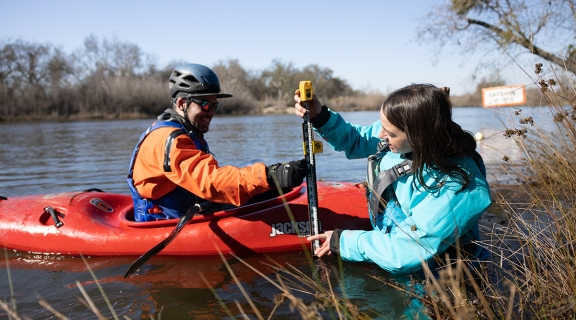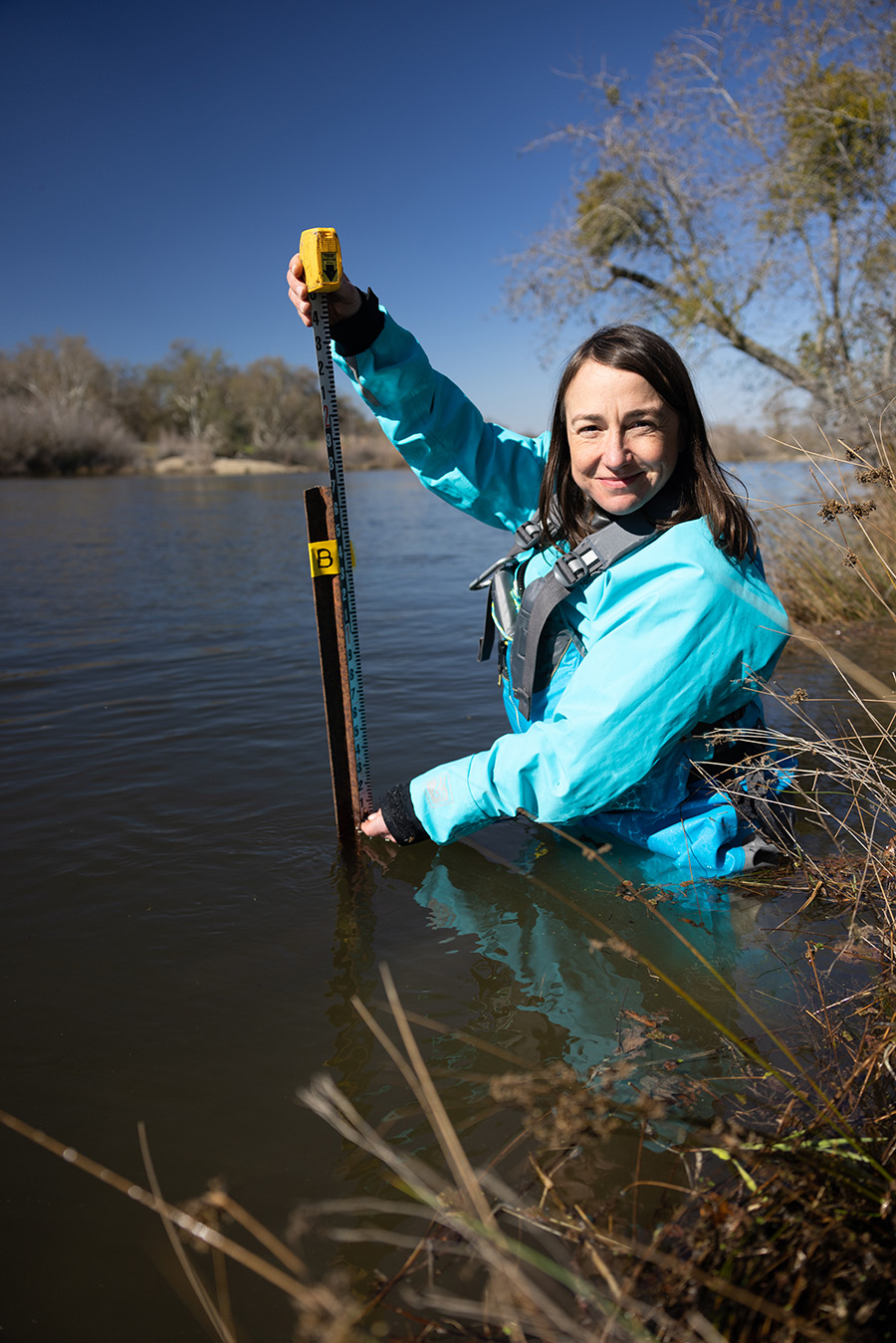
Rosenberg Institute Seminar Series - Erin Bray
Overview
How river rocks round and fine by fluvial abrasion
Erin Bray, Ph.D., Assistant Professor, School of the Environment, San Francisco State University
Abstract
Along rivers, bedload transport causes collision and wear of sediment particles, by both surface attrition that produces sand and silt, and chipping that produces larger fragments. As a result, riverbed sediments exhibit two downstream trends: rounding and fining where particle size decreases with distance downstream. Sediments supplied by hillslopes to rivers are initially angular upstream, and smooth into rounded gravels downstream as a result of abrasion. The transition from angular to round particles in fluvial environments indicates that a significant fraction of particle mass has been lost due to abrasion, but very little is known about the dependence of fragmentation on rock properties and width of the grain size distribution of a batch of rocks supplied from hillslopes to channels. Previous studies have shown abrasion to occur in two phases: the first phase being dominated by rounding, and the second phase resulting in size reduction. However, few studies have investigated what is the role of grain size distribution on wear rates, and how shape in turn controls wear rates. Further, abrasion rates measured in laboratory experiments have been limited to a relatively few types of lithologies, many with rounded pebbles. To quantify the response of differently sized rocks to abrasion in the fluvial environment, we performed tumbling experiments on two distinct lithologies: (1) densely welded Bishop Tuff which erupted from the Long Valley Caldera in eastern California at 760 ka, and (2) limestone from a quarry in the Middle Fork American River watershed in north-central California. We used a laboratory tumbling mill to quantify abrasion rates as a result of collisions of varying grain size distributions and examine downstream evolution of shape and size of pebbles. We used photo analysis to measure particle shape and surface texture. We find that (1) tuff particles eroded by producing small fragments, whereas limestone eroded by surface attrition, (2) the grain size distribution (GSD) of finer-grained wear product is lithology-dependent (sand from tuff, silt from limestone), (3) the tuff retained surface angularity despite significant mass lost, while limestone particles smoothed more, (4) wear rates were correlated with surface angularity, quantified as ratio of perimeter to ellipse defined by the major and minor axes, and (5) the initial width of the GSD had surprisingly little influence on wear rates, except during the first increment of erosion. Results suggest that predictions of downstream fining and rounding need to account for lithologic influences on fragmentation and attrition. Further, the production of sand versus silt during the fluvial abrasion process has implications for aquatic habitat, bedload transport, and evolution of gravel-sand transitions.
Bio
Erin Bray is an Assistant Professor in the School of the Environment, formerly in the Department of Earth and Climate Sciences and leads the Rivers Lab at San Francisco State University. Prior to joining SF State in 2019, Dr. Bray was an Assistant Professor as part of the Water Science Program at California State University, Northridge. She received her B.S. from Cornell University, a Master’s degree from Brown University, and her Ph.D. from University of California, Santa Barbara. Her research focuses on hydrology and fluvial geomorphology, with emphasis on river processes, river restoration, and water resources management. Her lab group is interested in river mechanics including sediment transport, river temperature, heat exchange between the water and atmosphere, fluvial abrasion, and hyporheic processes. Her lab group is also interested in quantifying how environmental change and human activities alter the ways in which rivers and watersheds function. Her research combines field observations, laboratory experiments, analysis, and computational modeling.
